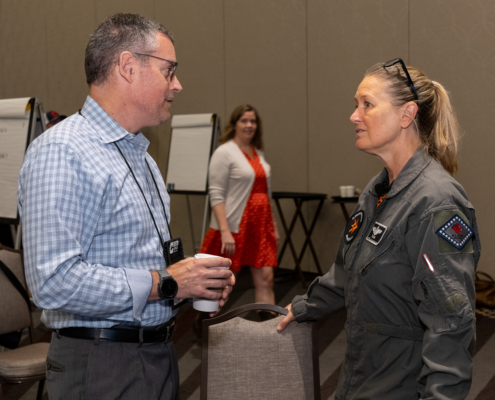 https://www.afterburner.com/wp-content/uploads/2024/11/High-Impact-Leader-Crete2024Summit-677-scaled.jpg
1707
2560
Ansley Anchors
/wp-content/uploads/2024/07/Afterburner-Logo-Resize-Fullcolor-300x93.png
Ansley Anchors2024-11-05 10:52:592024-12-26 14:56:56The Top 5 Attributes of a High-Impact Leader
https://www.afterburner.com/wp-content/uploads/2024/11/High-Impact-Leader-Crete2024Summit-677-scaled.jpg
1707
2560
Ansley Anchors
/wp-content/uploads/2024/07/Afterburner-Logo-Resize-Fullcolor-300x93.png
Ansley Anchors2024-11-05 10:52:592024-12-26 14:56:56The Top 5 Attributes of a High-Impact Leader
The Best Team Wins
The Best Team Wins: The New Science of High Performance by Adrian Gostick and Chester Elton
I have a superficial criticism of The Best Team Wins. The content is superb, but the title is . . . well . . . awkward. The word ‘team’ is a tough one to use correctly. I’m not naïve, and I know how authors and publishers struggle to find the right title for a new release. They want a title that piques the interest of a potential reader (buyer). I get it. Titles are more often about sales rather than content. So, at the expense of overusing a trite proverb, don’t judge a book by its cover . . . or the title on its cover.
Some managers might pick up this book, read the title, and think that the word ‘team’ is synonymous with the words ‘company’ or ‘organization.’ It’s not. There’s a linguistic problem that has run amok in the newspeak of leadership and organizational design. A team is a special thing. It isn’t just another word for a company. So, for a leader or manager to pick up The Best Team Wins they may get a dangerously wrong impression. For one, they may misunderstand that a company is not necessarily a team. But what’s worse is that they might think that competition between teams in an organization is a good thing – which is an idea contrary to the message the authors convey.
To clarify, if you don’t know the name and role of everyone on your team, then you are not leading a team. I don’t mean to say that you have failed to get to know your team. What I am saying is that no one can remember, however, gifted they may be, the names and roles of everyone in an organization as large as, say, Walmart. No one can have a close working relationship with everyone in an organization that large. Walmart employs more than two million people. Walmart is not a team. Walmart is a corporation. That’s not to say that Walmart isn’t composed of many great teams. I’m sure it is. But, teams can only be so big because the need for personal relationships acts as a limiting factor on size. Two million people – or a mere two thousand – is too large a group to maintain personal working relationships.
The authors of The Best Team Wins are addressing how to lead teams and, collectively, how large organizations benefit from better team leadership. It’s a book focused on the actions and activities individuals can take to lead the other individuals on their team. Competition between teams in an organization is usually detrimental. It creates silos, poor communication, the hoarding of valuable knowledge, and possibly even activity that works at cross-purposes for the organization as-a-whole. Every team within an organization should be working to help the whole company win while supporting other teams that are trying to do the same. So, to be clear, the title is not meant to imply an internal competition between teams. In fact, the authors explicitly address the issue of internal competition and how to overcome it by seeking cross-functional collaboration.
With clarity about the title, the reader can get down to the book’s point – soft leadership skills rock! Yep, it’s been repeatedly demonstrated on an empirical basis. Leading high-performing teams isn’t a management skill; it’s an interpersonal one. Interpersonal skills are highly complex. “The problem,” write the authors, “is that for most managers, the soft stuff is the hard stuff.”
For the more seasoned leaders like myself, part of the complex challenge is leading millennials. You’ll find that The Best Team Wins is wisely attuned to the struggles of leading the up-and-coming leaders of tomorrow. In my work with clients across a wide variety of industries, the lamentations are loud and consistent! Millennials are challenging for us . . . ahem . . . older folks to work with. Understanding the needs and motivations of millennials is key to leading effectively. For that challenge, The Best Team Wins is a superb guide.
The focus on millennials and the actionable recommendations that The Best Team Wins provides reinforces the value of Flawless Execution as a timeless methodology that transcends the generations. The basic principles of Flawless Execution are woven throughout the text to provide guidance to leaders of high- performing teams. Although new research is continuously developing the ‘science’ of leadership, little new is learned. Instead, the ‘new science’ goes only so far as to prove the leadership wisdom of many generations past.
Share This Post
More Like This
 https://www.afterburner.com/wp-content/uploads/2024/11/High-Impact-Leader-Crete2024Summit-677-scaled.jpg
1707
2560
Ansley Anchors
/wp-content/uploads/2024/07/Afterburner-Logo-Resize-Fullcolor-300x93.png
Ansley Anchors2024-11-05 10:52:592024-12-26 14:56:56The Top 5 Attributes of a High-Impact Leader
https://www.afterburner.com/wp-content/uploads/2024/11/High-Impact-Leader-Crete2024Summit-677-scaled.jpg
1707
2560
Ansley Anchors
/wp-content/uploads/2024/07/Afterburner-Logo-Resize-Fullcolor-300x93.png
Ansley Anchors2024-11-05 10:52:592024-12-26 14:56:56The Top 5 Attributes of a High-Impact Leader https://www.afterburner.com/wp-content/uploads/2024/09/fighter-jet-performing-quick-ariel-maneuver.jpeg
1280
1920
Nate Riggins
/wp-content/uploads/2024/07/Afterburner-Logo-Resize-Fullcolor-300x93.png
Nate Riggins2024-01-02 19:53:032024-12-26 14:56:584 Ways to Boost Your Team’s Morale and Hit Your Revenue Targets
https://www.afterburner.com/wp-content/uploads/2024/09/fighter-jet-performing-quick-ariel-maneuver.jpeg
1280
1920
Nate Riggins
/wp-content/uploads/2024/07/Afterburner-Logo-Resize-Fullcolor-300x93.png
Nate Riggins2024-01-02 19:53:032024-12-26 14:56:584 Ways to Boost Your Team’s Morale and Hit Your Revenue Targets https://www.afterburner.com/wp-content/uploads/2024/09/Group_Meeting_2-1.jpeg
1707
2560
Nate Riggins
/wp-content/uploads/2024/07/Afterburner-Logo-Resize-Fullcolor-300x93.png
Nate Riggins2024-01-02 18:26:092024-12-26 14:56:58Fueling Business Agility: The Strategic Pivot
https://www.afterburner.com/wp-content/uploads/2024/09/Group_Meeting_2-1.jpeg
1707
2560
Nate Riggins
/wp-content/uploads/2024/07/Afterburner-Logo-Resize-Fullcolor-300x93.png
Nate Riggins2024-01-02 18:26:092024-12-26 14:56:58Fueling Business Agility: The Strategic Pivot https://www.afterburner.com/wp-content/uploads/2024/09/airborn-fighter-jet-using-afterburners-1.jpeg
1080
1920
Nate Riggins
/wp-content/uploads/2024/07/Afterburner-Logo-Resize-Fullcolor-300x93.png
Nate Riggins2024-01-02 18:19:252024-12-26 14:56:59Combat Distractions and Boost Your Revenue – Fighter Pilot-Style
https://www.afterburner.com/wp-content/uploads/2024/09/airborn-fighter-jet-using-afterburners-1.jpeg
1080
1920
Nate Riggins
/wp-content/uploads/2024/07/Afterburner-Logo-Resize-Fullcolor-300x93.png
Nate Riggins2024-01-02 18:19:252024-12-26 14:56:59Combat Distractions and Boost Your Revenue – Fighter Pilot-Style https://www.afterburner.com/wp-content/uploads/2024/09/jamie-street-_94HLr_QXo8-unsplash-1.jpeg
1380
2048
Nate Riggins
/wp-content/uploads/2024/07/Afterburner-Logo-Resize-Fullcolor-300x93.png
Nate Riggins2024-01-02 15:02:302024-12-26 14:56:593 Steps New Leaders Must Include in Their Strategic Planning Process
https://www.afterburner.com/wp-content/uploads/2024/09/jamie-street-_94HLr_QXo8-unsplash-1.jpeg
1380
2048
Nate Riggins
/wp-content/uploads/2024/07/Afterburner-Logo-Resize-Fullcolor-300x93.png
Nate Riggins2024-01-02 15:02:302024-12-26 14:56:593 Steps New Leaders Must Include in Their Strategic Planning Process https://www.afterburner.com/wp-content/uploads/2024/09/team-looking-at-map-to-focus-on-improving-teamwork-in-the-workplace-1.png
667
1000
Nate Riggins
/wp-content/uploads/2024/07/Afterburner-Logo-Resize-Fullcolor-300x93.png
Nate Riggins2024-01-02 03:00:272024-12-26 14:56:594 Tips for Improving Teamwork in the Workplace
https://www.afterburner.com/wp-content/uploads/2024/09/team-looking-at-map-to-focus-on-improving-teamwork-in-the-workplace-1.png
667
1000
Nate Riggins
/wp-content/uploads/2024/07/Afterburner-Logo-Resize-Fullcolor-300x93.png
Nate Riggins2024-01-02 03:00:272024-12-26 14:56:594 Tips for Improving Teamwork in the Workplace https://www.afterburner.com/wp-content/uploads/2024/09/planning-1.jpeg
933
1400
Nate Riggins
/wp-content/uploads/2024/07/Afterburner-Logo-Resize-Fullcolor-300x93.png
Nate Riggins2023-05-02 20:23:162024-12-26 14:57:02Using Brain Chemistry For Building High-Performance Teams
https://www.afterburner.com/wp-content/uploads/2024/09/planning-1.jpeg
933
1400
Nate Riggins
/wp-content/uploads/2024/07/Afterburner-Logo-Resize-Fullcolor-300x93.png
Nate Riggins2023-05-02 20:23:162024-12-26 14:57:02Using Brain Chemistry For Building High-Performance Teams https://www.afterburner.com/wp-content/uploads/2024/09/afterburner-banner-image-ceo-jim-murphy-giving-a-presentation_crop-1.jpeg
784
1920
Nate Riggins
/wp-content/uploads/2024/07/Afterburner-Logo-Resize-Fullcolor-300x93.png
Nate Riggins2022-11-14 21:30:142024-12-26 14:57:02What If Your Teams Were Truly High Performing?
https://www.afterburner.com/wp-content/uploads/2024/09/afterburner-banner-image-ceo-jim-murphy-giving-a-presentation_crop-1.jpeg
784
1920
Nate Riggins
/wp-content/uploads/2024/07/Afterburner-Logo-Resize-Fullcolor-300x93.png
Nate Riggins2022-11-14 21:30:142024-12-26 14:57:02What If Your Teams Were Truly High Performing?
Top Three Threats to Employee Morale in Today’s Economy
Business Culture, Leadership, Motivation, Team BuildingAbout Us
Building Strong Teams Through the Guidance of Fighter Pilot Keynote Speakers.

